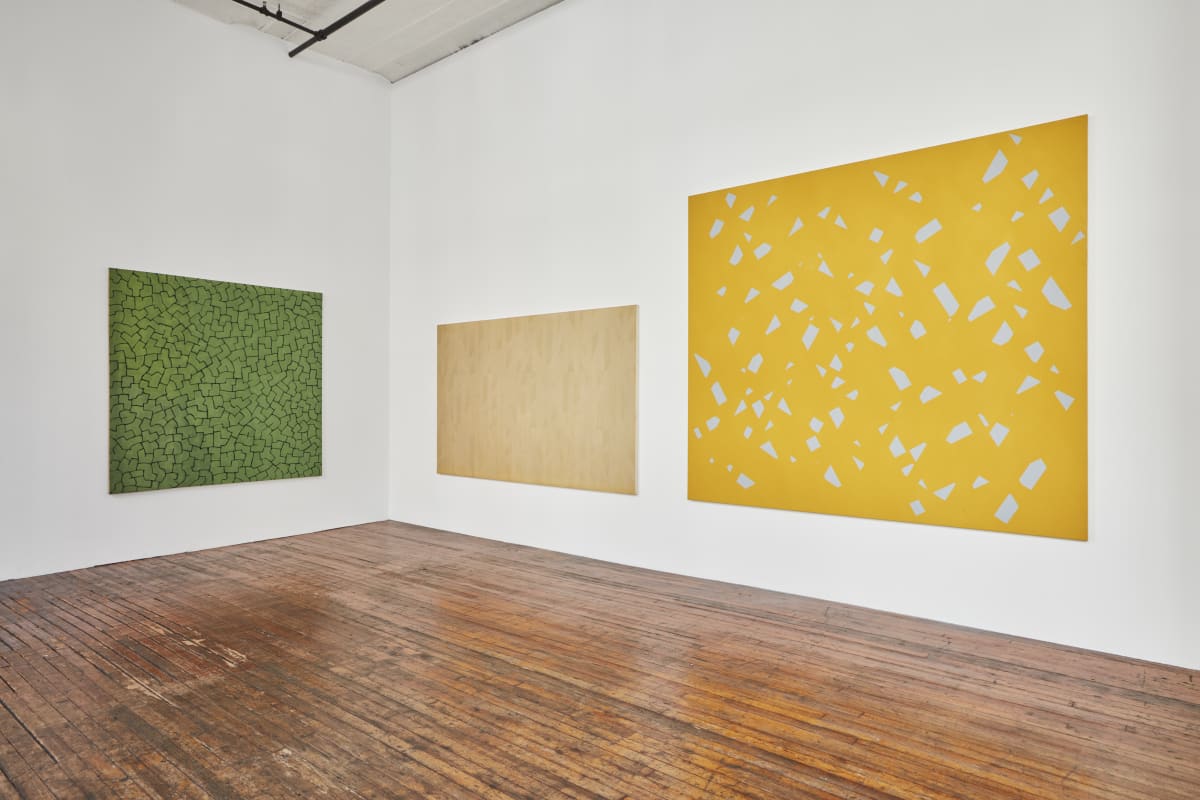Rosemarie Castoro at the Judd Foundation Reviewed by Jonathan Goodman
[...] Castoro was an artist of unusual skill. In Green Black (1964), an acrylic work of good size, Castoro used angled, sometimes straight black lines that attach to each other at the ends, creating a net-like web that breaks the deep green ground of the painting into small parts, quite interesting in their own right. On one level, the painting is distinctively abstract, while on the other, it might be seen as a sharply accurate rendering of a cracked expanse of earth. Abstraction is never completely so, just as figuration inevitably contains elements of non-objective form. [...]
The largest work, vertical in orientation is an acrylic painting, called Blue Gold Interference (1966). It consists of an overall gold ground, which is embellished throughout by white, or very light blue, shards, sometimes irregular, sometimes more even-edged. They vary in size from the small to the relatively large, given the size of the painting. One has to admire this show for its prescience, and its ability to reflect the spirit of the time when they were made; even now, the paintings look close to new, as if Castoro were ahead of other artists in her understanding of painting’s future. [...]
Castoro’s show helps us judge the achievement of an artist whose language remained both independent and aligned with the way artists were painting at the time. This works as a strategy because, with the increasing homogenization of culture, a sense of freedom is needed to break free of the monoculture we must deal with more and more. How does an artist achieve independence in the face of uniformity? If Castoro did decide to work consciously within a tightly developed language, the freedoms she took can be understood as an effort to push convention ahead. In this painter’s case, her particularly developed sense of craft led her beyond convention–despite the fact that she never fully leaves the regularly expected.
In the sense that she rejected the sweeping egotism of many abstract paintings of the time (a legacy of 1940s art), perhaps Castoro was able to knock down the obstacle of excessive self in favor of a gifted restraint. For this writer, measure and restraint mean everything in art, and Castoro brought both to her efforts. Seen now, the paintings are still capable of exercising a beneficial effect on a new generation, one for whom formalism is nearly a mistake, rather than a way of seeing. Castoro’s unusual skill, joined to psychic subtleties, gave her work a substantial formal seriousness.
Jonathan Goodman


















































































































































































